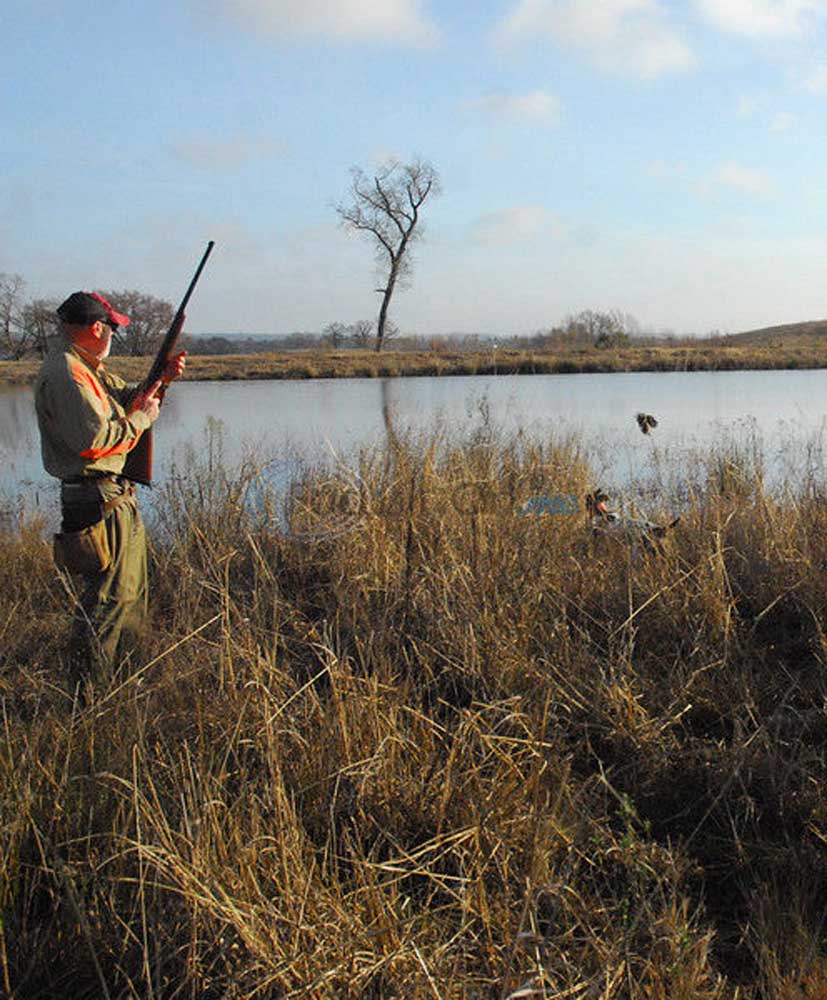While Western Texas improves, East Texas quail hunting a different animal
Published 9:48 pm Wednesday, February 4, 2015
OYNOR — Hindsight is a wonderful thing. You know, coulda, woulda, shoulda.
As Mike Martin, Rusty Mitchum and I walked toward Martin’s German shorthair, Millie, I couldn’t help but wonder what the country must have been like in the 1940s and ‘50s.
Double G Sportsman Adventures owner Brent Gallo has a section of rolling terrain cut out among the Pineywoods of Anderson County. The land was probably a combination of pasture and bottomland farm at some point, and there was no doubt that bobwhite quail would have thrived moving between the nearby woods, the native grass pastures and the row crops.
That would have been a generation, maybe two, ago. On this warm January morning the only quail that would be found hidden in the briars or the matted grass in the field were put there that morning before we arrived. That is more the way of this post bermuda grass pasture generation of hunters, at least in East Texas.
Even with something of a rebound in wild quail numbers in western and South Texas this year, the number of put-and-take quail operations grows in East Texas. The majority, like Gallo’s Double G, Hidden Lakes Hunting Resort at Yantis, Upland Bird Country in Corsicana and Wildcat Creek Quail Hunting Resort near Detroit are all situated an hour or so drive out of Dallas for a reason. They are also getting their share of East Texans hunting as well.
Quail hunting was once big time in Texas. It attracted the state’s richest hunters, who for years paid more for quail acreage than deer leases, as well as those with shallower pockets that had a pointer or two and access to family and friends’ lands with birds.
That began to change more than a decade ago as Texas became more urban and keeping four, five or six dogs in a backyard became impossible. A series of droughts that nearly wiped out the wild bobwhite and blue quail populations sped the decline. Some mysterious disease or environmental condition that has impacted wild quail numbers starting in the eastern states and moving west hasn’t helped either.
Combined, these factors have caused Texas quail hunter numbers to dip from somewhere near 243,000 in 1993 to closer to 20,000.
In East Texas the decline in quail numbers and quail hunting came much sooner. It was the victim of changing agricultural practices: the loss of small farms, the importation of bermuda grass for pastures and the elimination of fire on timber lands. Texas Parks and Wildlife Department’s regional offices near UT Tyler were originally built in the 1950s as a quail hatchery to restock bobwhite throughout East Texas. It was a doomed idea before it even started. Pen-reared quail seldom survive for long when released into the wild.
There was still quail hunting in Smith and surrounding counties in the 1970s, but it was playing out quickly. There were islands of birds here and there, and as each localized population was lost to hunting or natural attrition, the end neared.
In conjunction with the eastern turkey restoration program there has been talk of trying to bring quail back in East Texas. The prospects aren’t good.
“I don’t have a whole lot of hope,” said Jason Hardin, a TPWD biologist who works with upland game birds in East Texas. “So many things have changed. If you look at aerial surveys the landscape has changed so much. We don’t have the little farms we used to. It is more forested.”
There is one project, the Western Navarro Bobwhite Recovery Initiative, where the department is working with landowners to maintain and increase quail populations before they disappear. The project is in farm and ranching country and includes both bobwhite quail and the introduction of Rio Grande turkeys.
“Last year WNBRI partnered with (National Wild Turkey Federation) and received one of the upland game bird stamp grants to cost share habitat enhancement projects (native grass restoration, brush sculpting, and invasive brush control) in western Navarro and Ellis counties. Right now they have 18 projects that are ongoing or about to start up totaling close to 4,000 acres in habitat improvements for grassland birds,” said TPWD biologist Jay Whiteside, who works with the project.
While turkey numbers have exploded within the cooperative, the same cannot be said for quail. Whiteside said quail call counts have remained steady, but low in recent years for the most part.
“However, I have been getting reports from a few landowners that they have been seeing a few over the last few weeks. So, maybe the work is starting to pay off a little, but it is still too early to tell. We just need to keep expanding good habitat and hope for the best,” Whiteside noted.
Martin’s Katie is five and has never pointed a wild quail. She ran hard from the get-go and only stopped when she locked onto the scent of the releases birds. She didn’t seem to mind.
There may never be another wild covey in East Texas for dogs like Katie to point, but like throughout the southeastern U.S. hunters can still enjoy dog work. And after all, that is what quail hunting is all about.
Have a comment or opinion on this story? Contact outdoor writer Steve Knight by email at outdoor@tylerpaper.com. Follow Steve Knight on Facebook at TylerPaper Outdoors and on Twitter @tyleroutdoor.







